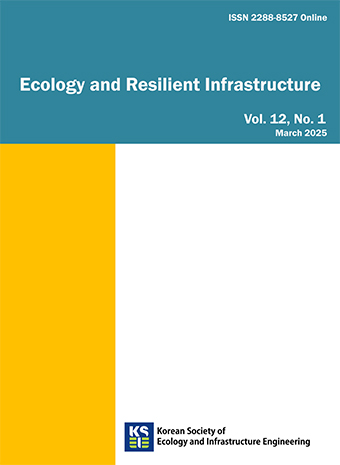Original Article
Abstract
References
Information
Fahrig, L., Arroyo-Rodriguez, V., Bennett, J.R., Boucher-Lalonde, V., Cazetta, E., Currie, D.J., Eigenbrod, F., Ford, A.T., Harrison, S.P., Jaeger, J.A.G., Koper, N., Martin, A.E., Martin, J.-L., Metzger, J.P., Morrisona, P., Rhodesn, J.R., Saunderso, D.A., Simberloff, D., Smith, A.C., Tischendorf, L., Vellend, M., and Watling, J.I. 2019. Is habitat fragmentation bad for biodiversity? Biological Conservation 230: 179-186.
10.1016/j.biocon.2018.12.026
Haddad, N.M., Brudvig, L.A., Clobert, J., Davies, K.F., Gonzalez, A., Holt, R.D., Lovejoy, T.E., Sexton, J.O., Austin, M.P., Collins, C.D., Cook, W.M., Damschen, E.I., Ewers, R.M., Foster, B.L., Jenkins, C.N., King, A.J., Laurance, W.F., Levey, D.J., Margules, C.R., Melbourne, B.A., Nicholls, A.O., Orrock, J.L., Song D.-X., and Townshend, J.R. 2015. Habitat fragmentation and its lasting impact on Earth's ecosystems. Science Advances 1: e1500052.
10.1126/sciadv.150005226601154PMC4643828
McGarigal, K., Cushman, S.A., and Ene, E. 2012. FRAGSTATS v4: Spatial Pattern Analysis Program for Categorical and Continuous Maps. Computer software program produced by the authors at the University of Massachusetts, Amherst. http://www.umass.edu/landeco/research/fragstats/fragstats.html. Accessed 3 January 2021.
Woo, H.S., Park, M.H., Cho, K.H., Cho, H.J., and Chung, S.J. 2010. Recruitment and succession of riparian vegetation in alluvial river regulated by upstream dams-focused on the Nakdong River downstream Andong and Imha Dams. Journal of Korea Water Resources Association 43: 455-469. (in Korean)
10.3741/JKWRA.2010.43.5.455
- Publisher :Korean Society of Ecology and Infrastructure Engineering
- Publisher(Ko) :응용생태공학회
- Journal Title :Ecology and Resilient Infrastructure
- Journal Title(Ko) :응용생태공학회 논문집
- Volume : 8
- No :1
- Pages :64-78
- Received Date : 2021-03-22
- Revised Date : 2021-03-28
- Accepted Date : 2021-03-29
- DOI :https://doi.org/10.17820/eri.2021.8.1.064




 Ecology and Resilient Infrastructure
Ecology and Resilient Infrastructure







